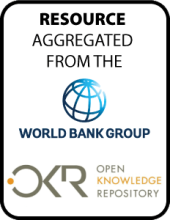Land Library Search
Through our robust search engine, you can search for any item of the over 73,000 highly curated resources in the Land Library.
If you would like to find an overview of what is possible, feel free to peruse the Search Guide.
/ library resources
Showing items 1 through 9 of 18.This paper investigates the
effectiveness of protected areas in slowing tropical forest
clearing in 64 countries in Asia/Pacific, Africa, and Latin
America for the period 2001-2012. The investigation compares
Dry tropical woodlands provide around 80
percent of the energy needs of both urban and rural
populations in Africa and are of similar importance on a
more localized scale in other areas. They also provide
Using census data from the Censo
Agropecuario 1995-96, the authors map indicators of current
land use, and agricultural productivity across Brazil's
Legal Amazon, These data permit geographical resolution
The World Bank's revised forest
policy came into being in 2002 and covers all types of
forests. It has the following key objectives: (i) harnessing
the potential of forests to reduce poverty in a sustainable
This paper presents a somewhat novel
approach to explore the economic contribution of ecosystems.
It develops linked models to capture connections between
resource stocks and flows and the resulting microeconomic
This report evaluates the requirements
for an assessment of climate change impacts on agriculture
to guide policy makers on investment priorities and phasing.
Because agriculture is vital for national food security and
Human welfare and development are
heavily influenced by climatic factors. As many as 95
percent of all disaster-related casualties occur in
developing countries, and after an event the recovery often
Climate change is both a cause and an
effect of biodiversity change. Along with anthropogenic
dispersion, climate change is the main driver of change in
the geographical distribution of both beneficial and harmful
Poverty reduction strategies (PRSs)
provide a central framework for macroeconomic, structural,
and social policies in developing countries. Because of the
numerous and complex links between environment and poverty,


